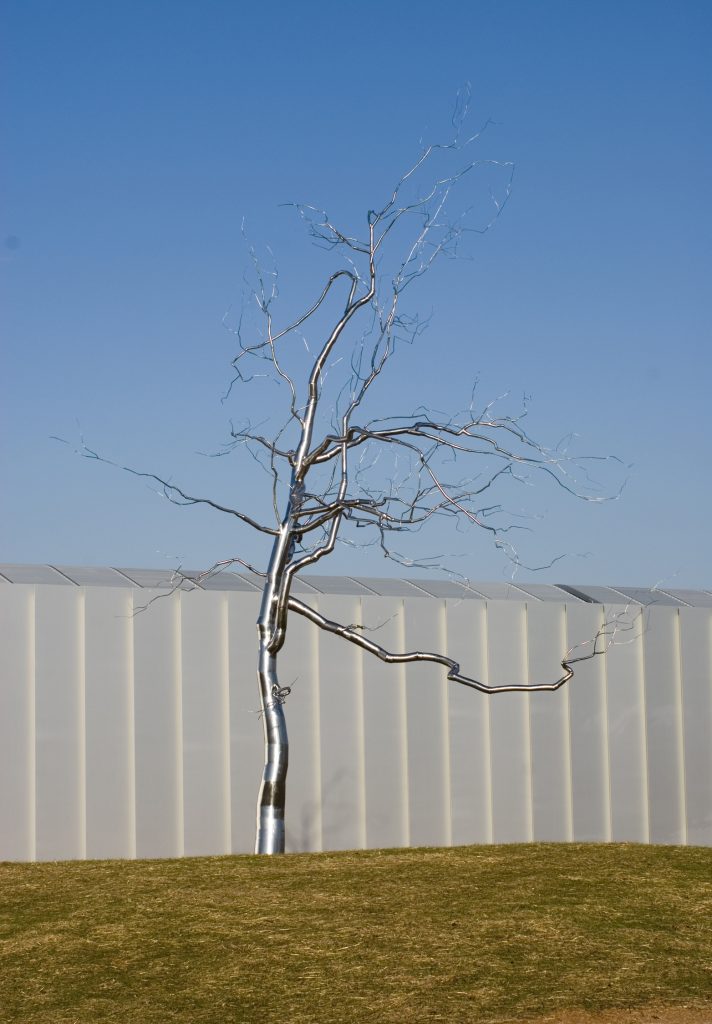Askew (work of art)
Información sobre la obra de arte
Ideas clave sobre esta obra de arte
- Roxy Paine is an artist who creates giant metal treelike structures that he calls dendroids. They are inspired by trees, but they do not depict a specific type of tree.
- The growth patterns in nature, the brain, and the nervous system inspired Paine’s interest in dendroids.
- This sculpture is part of the artist’s series of large stainless steel installations. Its reflective surface changes with the sunlight.
- The branches have slight differences that make this structure look more like a real tree.
- Paine uses industrial building materials to create sculptures of natural-looking objects.
Más información
Roxy Paine is a contemporary American artist and sculptor who lives and works in New York. Askew is part of his series of stainless steel sculptures that he calls dendroids. This term describes treelike forms with elaborate branching structures. The artist’s fascination with dendroids began when he was studying the growth patterns in nature, the brain, and the nervous system. His sculptures are inspired by real trees, but they do not depict actual species of trees.
Askew is almost 47 feet tall and stands beside the NCMA’s West Building. The small differences in its branches make this sculpture look like something that grows in nature rather than something that was built by humans and machines. Because this sculpture is made from stainless steel, its surface is highly reflective. It changes dramatically depending on the time of day and the brightness of the sun.
Paine’s installations often represent the conflict between what is natural and what is artificial. He has described his work as “a collision of the industrial world with the natural world.” To create his art, Paine often uses the same industrial materials that are used to build pipelines and factories.
I’ve processed the idea of a tree and created a system for its form. I take this organic majestic being and break it down into components and rules. The branches are translated into pipe and rod.
Roxy Paine
The installation of Askew was challenging. The sculpture arrived at the NCMA in several pieces. The crew assembled it, lifted the sculpture with a crane, and realized that the base would not properly support the sculpture. The base had to be adjusted while the sculpture hung in mid air for 24 hours. When the sculpture was secured in place, Paine and his team welded the remaining branches.
tags: perception, reflection, variation, seasons, environmental science, biology
Recursos adicionales
Recursos para los profesores
- Read Paine’s artist statement.
- Watch a video of the artist explaining his work.
- Read a review of a similar sculpture by Paine.
Recursos para los estudiantes
- View additional works by Paine.
- Watch a video of this sculpture being installed at the NCMA.
- Watch a video to see how steel is made.

